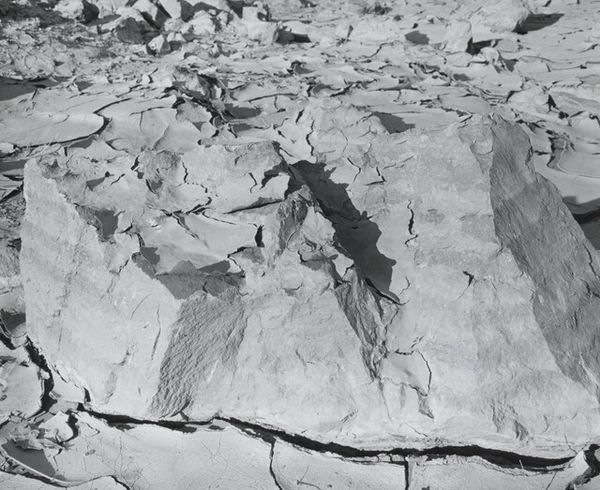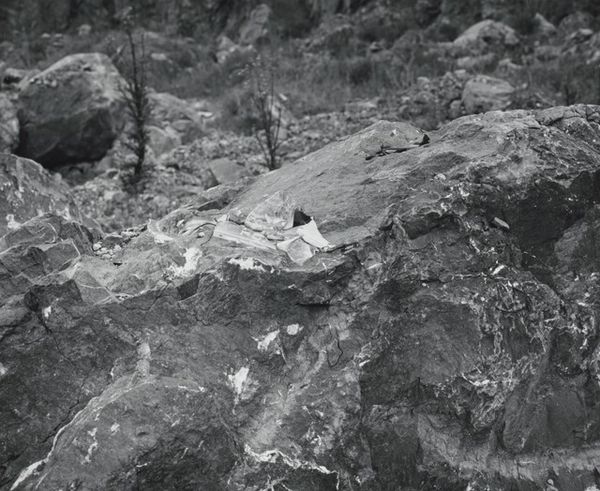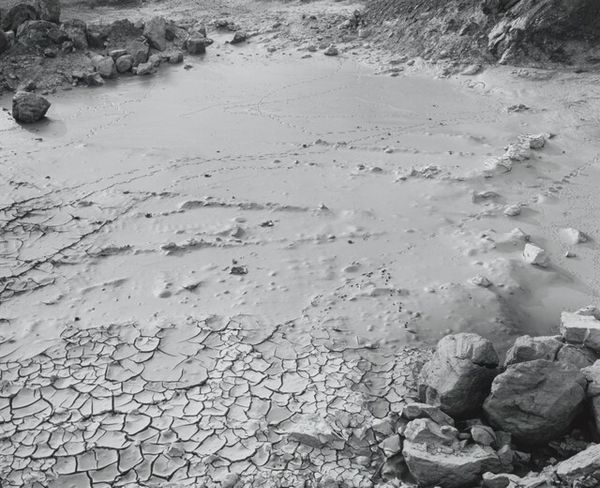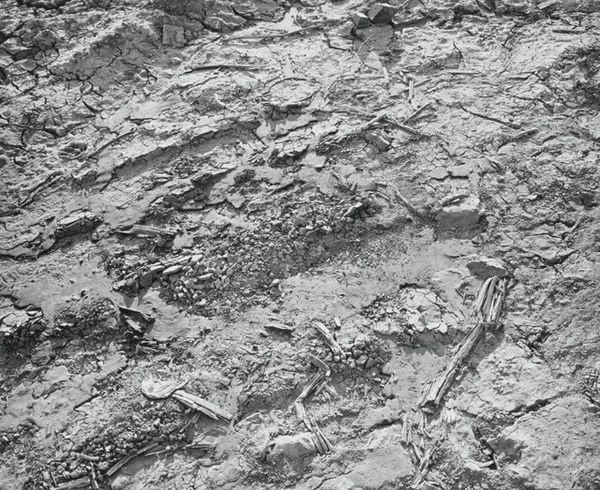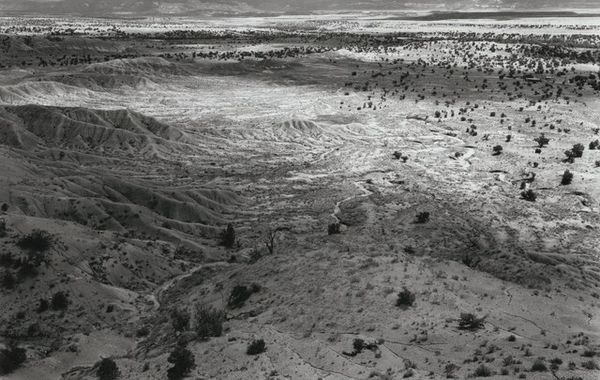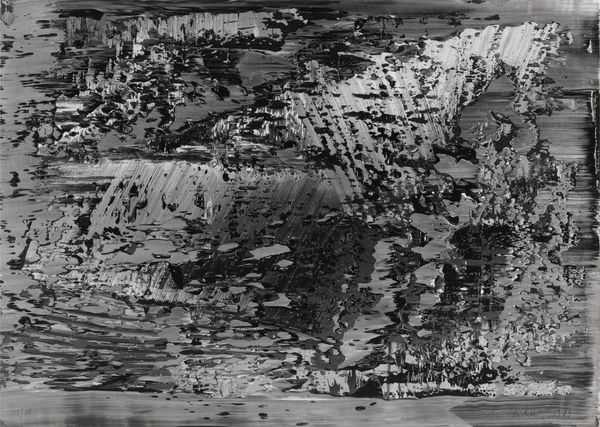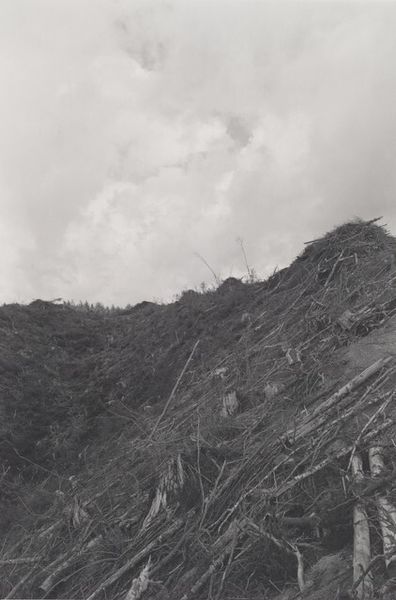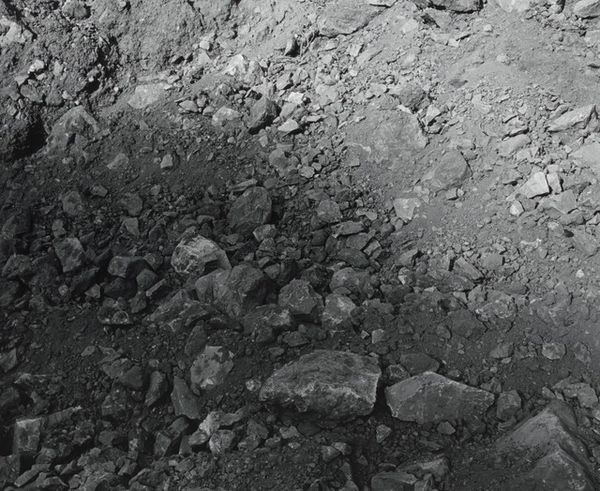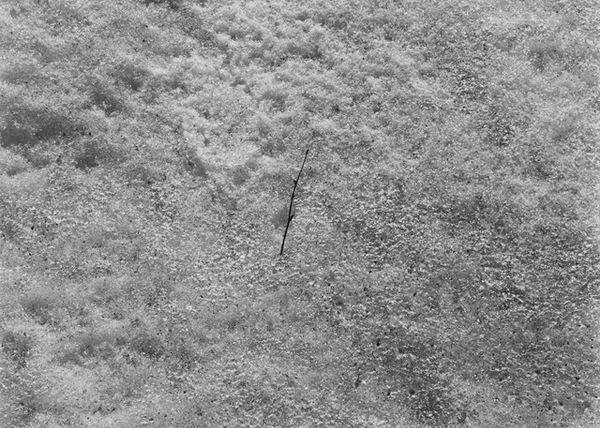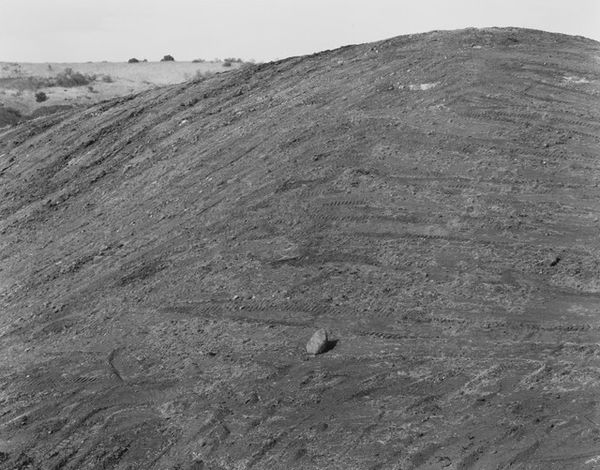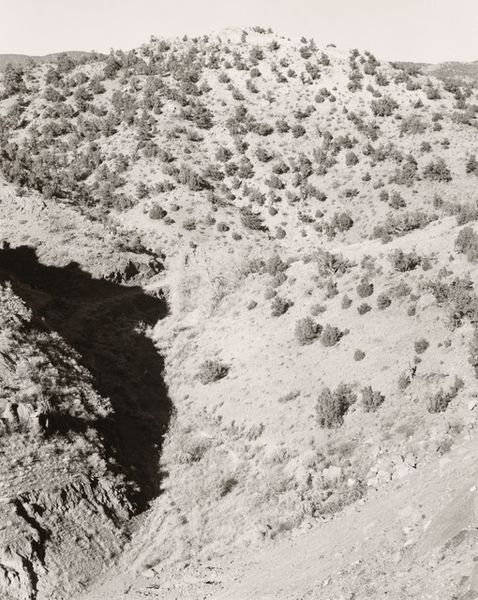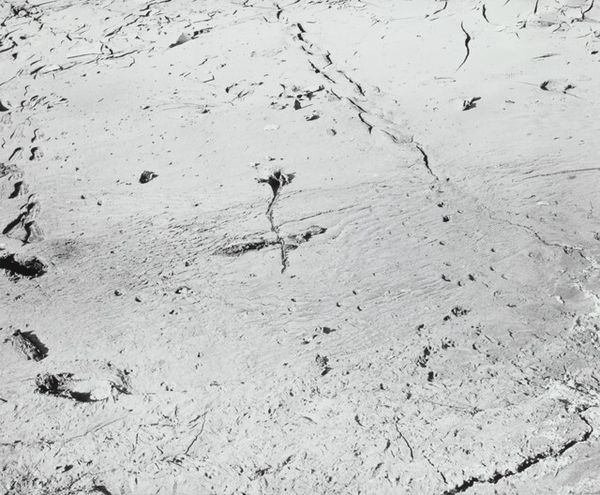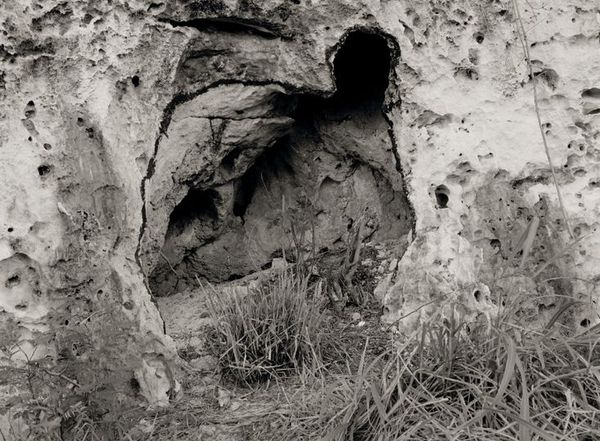
Aerial View: Logs and Debris in South End of Spirit Lake--4.5 Miles North of Mount Saint Helens, Washington Possibly 1982 - 1983
0:00
0:00
contact-print, photography
#
natural shape and form
#
natural formation
#
snowscape
#
nieve
#
countryside
#
postmodernism
#
landscape
#
contact-print
#
rugged
#
photography
#
environmental-art
#
gloomy
#
natural texture
#
weather
#
shadow overcast
Dimensions: image: 45.6 x 55.7 cm (17 15/16 x 21 15/16 in.) sheet: 50.8 x 60.6 cm (20 x 23 7/8 in.)
Copyright: National Gallery of Art: CC0 1.0
Curator: This photograph, "Aerial View: Logs and Debris in South End of Spirit Lake," by Frank Gohlke, taken sometime between 1982 and 1983, is quite striking. Editor: It really is. It feels… desolate, almost post-apocalyptic. The stark contrast between the debris-filled water and the eroded landscape is visually arresting. What draws your eye when you look at this image? Curator: What immediately captures my attention is the visible record of a cataclysmic event, processed and documented through photography. We see not just a landscape, but the very materials – logs, ash, and water – rearranged by a specific event. How was the landscape reshaped by human industry *before* the eruption, and what consumption patterns led to so much lumber ending up in the lake? Editor: So, you're focusing on the photograph as evidence of industrial practices and the consumption of resources that contributed to this altered environment? Curator: Precisely. Gohlke doesn’t present a romantic vista; he shows us the aftermath, a result of both natural disaster and, indirectly, human labor. The sheer quantity of logs suggests the scale of the logging industry operating in the area. Do you think Gohlke is intentionally making a statement about our relationship with the environment? Editor: It seems undeniable. By focusing on the debris and altered landscape, he's forcing us to confront the material consequences of our actions. It makes me wonder about the labor conditions in the timber industry at that time too. Curator: Exactly! Thinking about the workers who harvested those logs provides another layer to our understanding. Photography becomes a document not just of place, but of process, labor, and consequence. It pushes against the traditional idea of landscape photography. Editor: I never considered the human element so directly, but your focus on materials and means of production really shifted my perspective. I now see a complex narrative woven into this image. Curator: And that's the beauty of art – to continually uncover layers of meaning. The power is within understanding the labor and industry behind the picture.
Comments
No comments
Be the first to comment and join the conversation on the ultimate creative platform.
